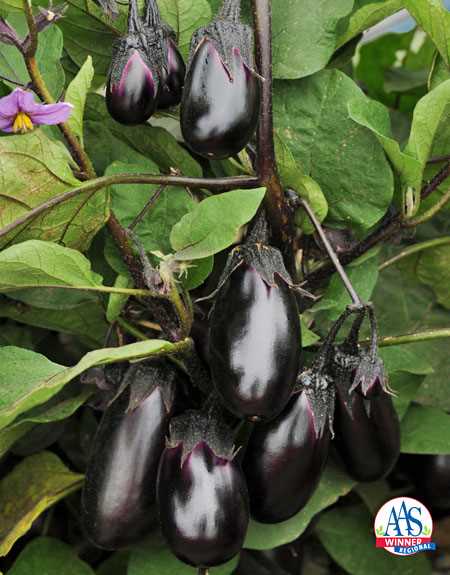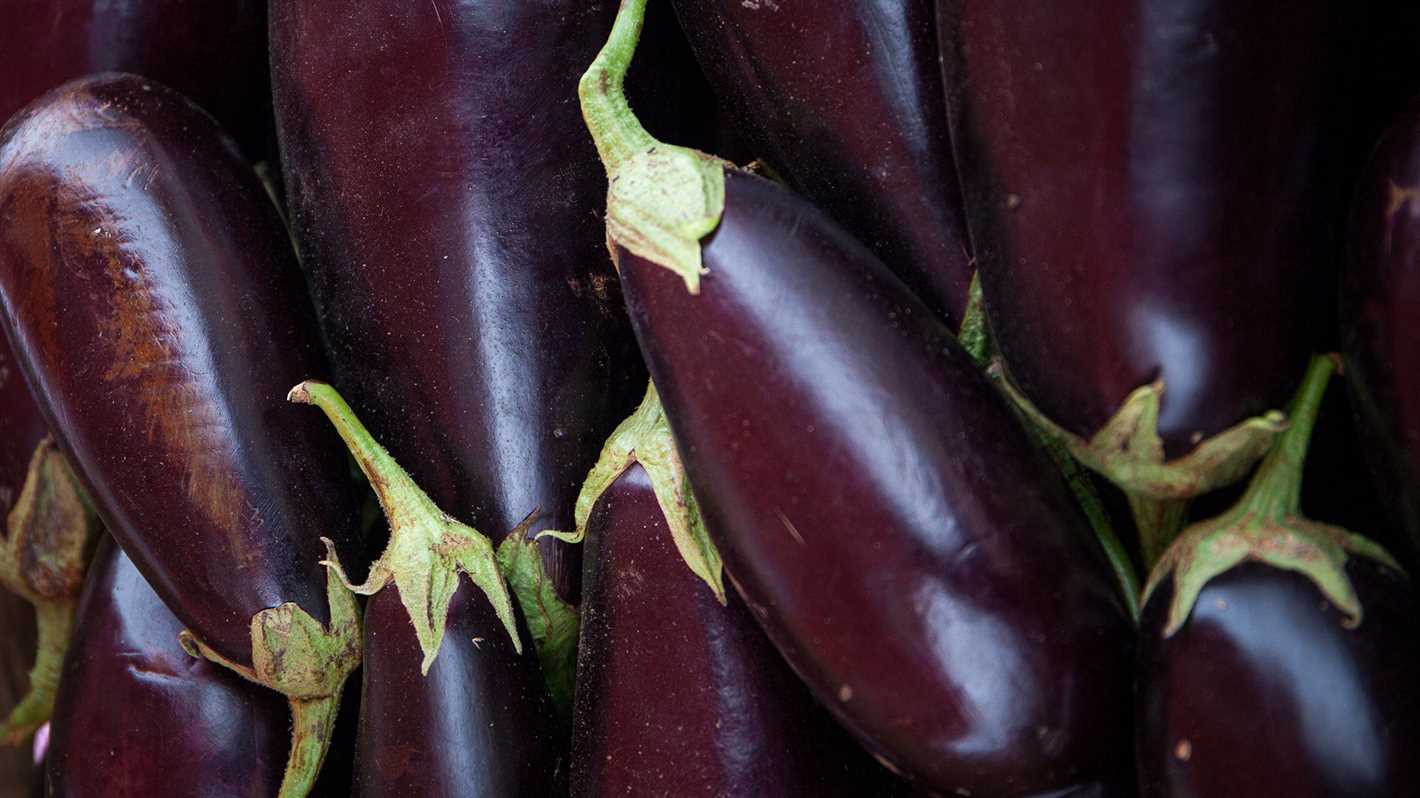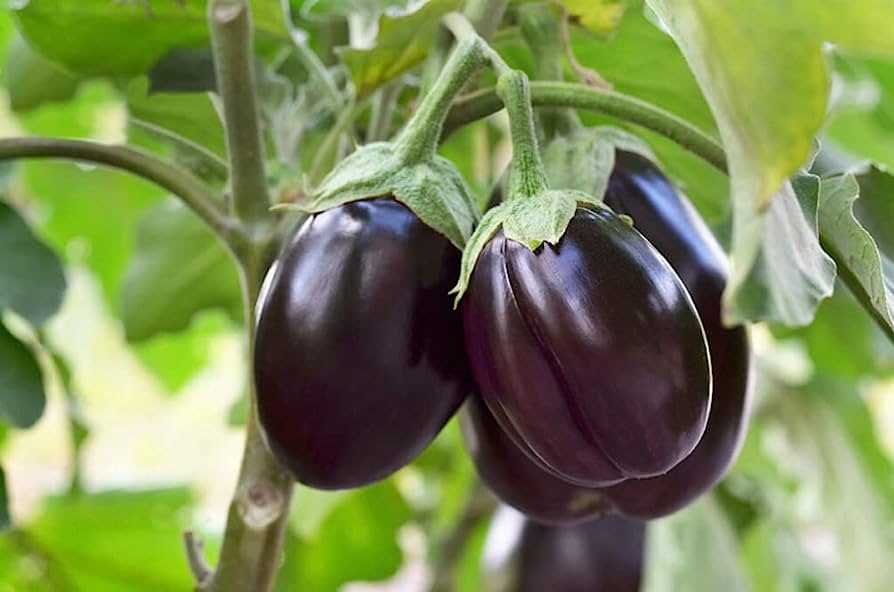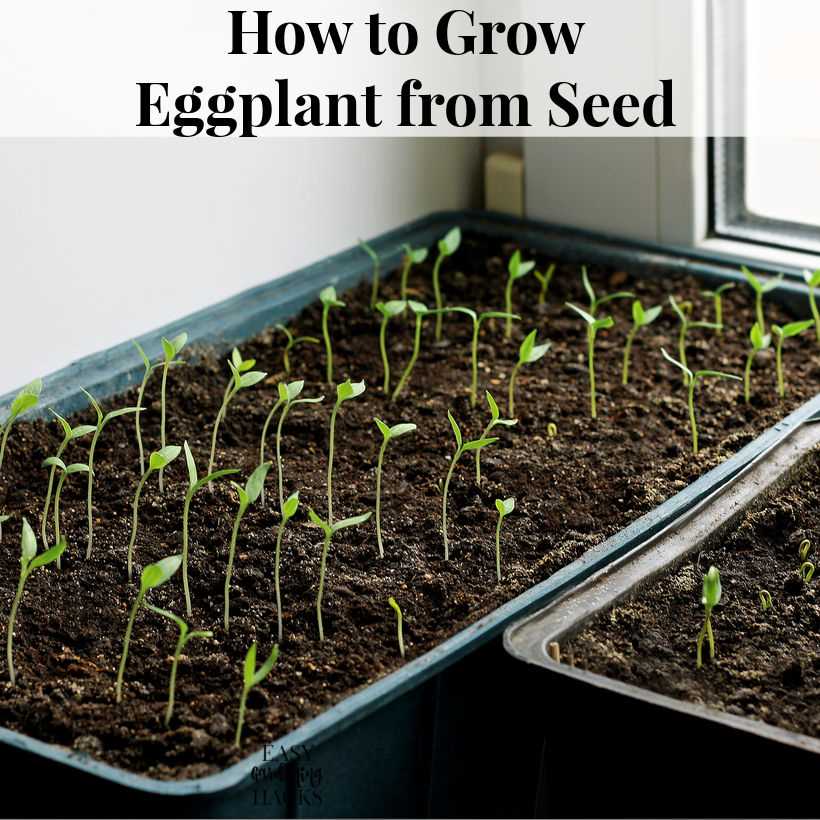- Choosing the Right Aubergine Variety
- Preparing the Soil for Aubergine Seeds
- 1. Choose a sunny location
- 2. Clear the area
- 3. Test the soil
- 4. Amend the soil
- 5. Loosen the soil
- 6. Mulch the soil
- 7. Water the soil
- Best Time to Sow Aubergine Seeds
- Sowing Aubergine Seeds Indoors
- Here is a step-by-step guide on how to sow aubergine seeds indoors:
- Watering and Feeding Aubergine Seedlings
- Watering
- Feeding
- Transplanting Aubergine Seedlings
- 1. Timing
- 2. Hardening Off
- 3. Site Selection
- 4. Preparing the Soil
- 5. Planting
- 6. Spacing
- 7. Watering
- 8. Mulching
- 9. Supporting the Plants
- Protecting Aubergine Seedlings from Pests and Diseases
- 1. Keep the growing area clean
- 2. Use row covers or netting
- 3. Introduce beneficial insects
- 4. Avoid overwatering
- 5. Rotate crops
- 6. Use organic pesticides
- Harvesting and Storing Aubergines
- “Question-Answer”
- When is the best time to sow aubergine seeds?
- What is the ideal temperature for aubergine seed germination?
- Should I soak aubergine seeds before planting?
- How often should I water aubergine seedlings?
- How long does it take for aubergine seeds to germinate?
- “Video” HOW TO PLANT AND GROW AUBERGINES
Are you interested in growing your own aubergines in 2023? Whether you’re a seasoned gardener or a beginner, this article will provide you with valuable tips on how to sow aubergine seeds for strong and healthy seedlings.
As one of the most popular vegetables in many cuisines around the world, aubergines are not only delicious but also a great source of vitamins, minerals, and antioxidants. Growing your own aubergines allows you to enjoy their fresh taste and reap the benefits of homegrown produce.
When it comes to sowing aubergine seeds, it’s important to start early in the year to give your seedlings enough time to develop before transplanting them outdoors. This means sowing your aubergine seeds indoors around 8-10 weeks before the last expected frost date in your area.
To ensure strong and healthy seedlings, it’s crucial to provide the right conditions for germination. Aubergine seeds require warmth to germinate, so using a heat mat or placing them in a warm location can help speed up the process. Additionally, using fresh and high-quality seeds will increase your chances of success.
Once your aubergine seeds have germinated, it’s important to give them enough light to promote healthy growth. Place them in a location with bright, indirect light or use grow lights if you don’t have access to natural sunlight. Keep the soil evenly moist but not waterlogged to prevent damping-off disease.
Don’t forget to gradually acclimate your seedlings to outdoor conditions before transplanting them into the garden. Harden them off by gradually increasing their exposure to sunlight and reducing watering to mimic the outdoor environment.
By following these sowing tips, you’ll be on your way to growing strong and productive aubergine plants in 2023. With proper care and attention, you’ll soon be enjoying a bountiful harvest of this versatile vegetable.
Choosing the Right Aubergine Variety
When it comes to growing aubergines, choosing the right variety is crucial. There are several factors to consider, such as taste, color, shape, and size. Here are some popular aubergine varieties to help you decide which one is best for your garden:
Black Beauty: This is one of the most common and popular varieties of aubergine. It has a glossy, deep purple skin and a mild, creamy flavor. Black Beauty is known for its high productivity and is great for cooking in various dishes.
Long Purple: As the name suggests, this variety is characterized by long and slender purple fruits. It has a rich, meaty texture and is perfect for grilling or stuffing. Long Purple aubergines are also known for their excellent flavor and beautiful presentation on the table.
Japanese White Egg: This variety produces small, egg-shaped fruits with white skin. It has a delicate flavor and tender flesh. Japanese White Egg aubergines are great for stir-fries and can also be pickled or used in salads for a unique culinary experience.
Graffiti: With its stunning purple and white striped skin, Graffiti aubergines are a visual delight. They have a slightly sweet flavor and are often used for roasting or grilling. These aubergines add a vibrant touch to any dish and are popular among gardeners and chefs alike.
Fairy Tale: This variety is small and oval-shaped, with a shiny, dark purple skin. Fairy Tale aubergines have a sweet flavor and tender flesh. They are perfect for slicing and pan-frying, as they cook quickly and taste delicious with various seasonings.
As you can see, there are numerous aubergine varieties to choose from, each with its own unique characteristics. Consider your culinary preferences and growing conditions to select the perfect variety for your garden. Happy gardening!
Preparing the Soil for Aubergine Seeds
Before sowing aubergine seeds, it is important to prepare the soil to provide the best growing conditions for the seedlings. Here are the steps to prepare the soil:
1. Choose a sunny location
Aubergines thrive in full sun, so choose a location in your garden that receives at least 6-8 hours of direct sunlight each day.
2. Clear the area
Remove any weeds or vegetation from the chosen area. Use a garden fork or a shovel to dig up the soil and remove any large rocks or debris.
3. Test the soil

It is important to know the pH level and fertility of your soil. Test the soil using a soil testing kit or send a sample to a local agricultural extension service for analysis. Aubergines prefer a pH level of 6.0 to 7.0.
4. Amend the soil
If the soil pH is too low, add lime to increase it. If the pH is too high, add sulfur to decrease it. Follow the recommendations from the soil testing kit or the agricultural extension service for specific instructions.
In addition to adjusting the pH, it’s important to ensure that the soil is fertile and well-draining. Add organic matter such as compost, well-rotted manure, or leaf mold to improve the soil structure and fertility.
5. Loosen the soil
Use a garden fork or a tiller to loosen the soil to a depth of about 8-10 inches. This will help provide a loose and well-aerated soil for the aubergine roots to grow.
6. Mulch the soil
Apply a layer of organic mulch, such as straw or wood chips, to the soil surface. This will help conserve moisture, suppress weed growth, and regulate soil temperature.
7. Water the soil
Before sowing the aubergine seeds, thoroughly water the soil to ensure it is moist but not waterlogged. This will help create a favorable environment for the seeds to germinate.
By following these steps to prepare the soil for aubergine seeds, you can provide the ideal growing conditions for strong and healthy seedlings.
Best Time to Sow Aubergine Seeds
In order to ensure strong and healthy seedlings, it is essential to sow aubergine seeds at the right time. The ideal time to sow aubergine seeds is typically 8-12 weeks before the last frost date in your area. This allows enough time for the seeds to germinate and develop strong roots before transplanting them outdoors.
It is important to note that aubergines are warm-season crops and require a long growing season. Therefore, it is recommended to start sowing the seeds indoors in early spring, around late February or early March, depending on your climate zone.
Here are some key steps to sow aubergine seeds:
- Choose high-quality seeds from a reputable seed supplier. Look for varieties that are suitable for your growing conditions and preferences.
- Start by filling seed trays or pots with a well-draining seed compost. Moisten the compost lightly before sowing.
- Sow the aubergine seeds on the surface of the compost, spacing them about an inch apart. Gently press the seeds into the compost, but avoid burying them too deeply.
- Cover the seeds with a thin layer of compost or vermiculite.
- Place the trays/pots in a warm and sunny location, such as a windowsill or greenhouse, with a temperature of around 21-27°C (70-80°F).
- Keep the compost moderately moist, but not waterlogged.
- Once the seeds have germinated and the seedlings have developed a few true leaves, transplant them into individual pots. Handle the seedlings carefully to avoid damaging their delicate roots.
- Continue to provide the seedlings with ample sunlight, water, and nutrients as they grow.
- When the risk of frost has passed and the seedlings have reached a height of about 10-15cm (4-6 inches), they can be hardened off and transplanted into the garden or larger containers.
Conclusion:
Sowing aubergine seeds at the right time is crucial for the success of your growing season. Starting indoors several weeks before the last frost gives the seeds a head-start and increases the chances of strong and healthy seedlings. Following the proper steps for sowing and caring for the seedlings will ensure a bountiful harvest of delicious and tender aubergines in 2023.
Sowing Aubergine Seeds Indoors
Starting aubergine seeds indoors is a great way to ensure strong and healthy seedlings for planting outdoors. By sowing the seeds indoors, you can control the growing conditions and provide optimal care for your young plants.
Here is a step-by-step guide on how to sow aubergine seeds indoors:
- Selecting and preparing the containers: Choose shallow containers or trays, preferably with drainage holes. Clean the containers thoroughly with water and mild soap to remove any dirt or debris.
- Preparing the seed-starting mix: Use a well-draining seed-starting mix or a mixture of compost, peat moss, and perlite. Fill the containers with the mix, leaving a small gap at the top.
- Sowing the seeds: Place the aubergine seeds on top of the seed-starting mix, evenly spaced apart. Lightly press the seeds into the mix, ensuring they are covered with a thin layer of the mix.
- Providing proper lighting: Aubergine seeds require plenty of light to germinate and grow into healthy seedlings. Place the containers in a location that receives bright, indirect sunlight or use artificial grow lights.
- Ensuring proper temperature and humidity: Aubergine seeds germinate best in warm temperatures (around 25-30°C) and with high humidity. Use a propagation mat or place the containers on top of a warm surface to provide consistent heat. Cover the containers with a plastic dome or wrap them in a plastic bag to maintain humidity.
- Watering carefully: Keep the seed-starting mix moist but not waterlogged. Water the containers from the bottom by placing them in water and allowing the mix to soak up the moisture. Avoid overwatering, as it can lead to damping-off disease.
- Transplanting the seedlings: When the aubergine seedlings have developed their first set of true leaves and are about 2-3 inches tall, they are ready to be transplanted into individual pots or larger containers.
- Hardening off and planting outdoors: Before planting the aubergine seedlings outdoors, gradually acclimatize them to outdoor conditions by placing them outside for a few hours each day for a week. Choose a sunny location with well-drained soil and transplant the seedlings, spacing them about 18 inches apart.
Following these steps will help you sow aubergine seeds indoors successfully and grow strong, healthy seedlings for planting outdoors later. Remember to provide proper care and monitor the seedlings’ growth to ensure a successful harvest of delicious aubergines.
Note: It is important to refer to specific seed packets or consult local gardening resources for any additional instructions or recommendations specific to the variety of aubergine seeds you are sowing.
Watering and Feeding Aubergine Seedlings
Proper watering and feeding are key to ensuring healthy and strong seedlings for your aubergine plants. Here are some tips to help you water and feed your aubergine seedlings effectively:
Watering
- Water your seedlings consistently, keeping the soil evenly moist. Avoid overwatering, as this can lead to root rot.
- Water the base of the plants rather than the leaves to prevent the spread of diseases.
- Use room temperature water to avoid shocking the delicate seedlings.
- Consider using a drip irrigation system or a watering can with a fine nozzle to provide a gentle and even distribution of water.
Feeding
- Start feeding your aubergine seedlings with a balanced liquid fertilizer once they have developed their first set of true leaves.
- Choose a fertilizer specifically designed for vegetables or a general-purpose fertilizer with a balanced ratio of nitrogen, phosphorus, and potassium.
- Follow the instructions on the fertilizer packaging for the recommended dosage and frequency of application.
- Apply the fertilizer to the base of the plants, avoiding contact with the leaves.
Remember to monitor your aubergine seedlings closely and make adjustments to your watering and feeding routine as needed. Providing the right amount of water and nutrients will help your seedlings grow into strong and healthy plants ready for transplanting into the garden.
Transplanting Aubergine Seedlings
Transplanting aubergine seedlings is a crucial step in their growth process. It is important to do it properly to ensure the best chance of success for your plants. Here are some useful guidelines to follow:
1. Timing

Transplant your aubergine seedlings outdoors once they have developed a strong root system and have at least two sets of true leaves. This usually occurs around 6-8 weeks after sowing the seeds.
2. Hardening Off
Before transplanting, gradually expose your seedlings to outdoor conditions to help them acclimatize to the change in environment. Start by placing them outside for a few hours each day, gradually increasing the time over a period of one to two weeks.
3. Site Selection

Choose a sunny spot in your garden that receives at least 6-8 hours of direct sunlight per day. The soil should be well-drained and rich in organic matter. Avoid areas prone to standing water or strong winds.
4. Preparing the Soil
Before planting, prepare the soil by removing any weeds and breaking up large clumps. Incorporate organic matter such as compost or well-rotted manure to improve soil fertility and drainage.
5. Planting
Dig a hole for each seedling that is slightly larger than the root ball. Gently remove the seedling from its container, being careful not to disturb the roots. Place the seedling in the hole and backfill with soil, firming it gently around the base of the plant.
6. Spacing
Space your aubergine seedlings approximately 18-24 inches apart to allow for good air circulation and to prevent overcrowding. This will help reduce the risk of diseases and promote healthy growth.
7. Watering
After transplanting, water the seedlings thoroughly to help settle the soil around the roots. Water regularly, ensuring the soil remains consistently moist but not waterlogged. Avoid overhead watering, as this can promote fungal diseases.
8. Mulching
Apply a layer of organic mulch around the base of the plants to help conserve moisture, suppress weeds, and regulate soil temperature. Use materials such as straw, hay, or compost, and ensure the mulch does not come into direct contact with the plant stems.
9. Supporting the Plants
Aubergine plants can benefit from staking or trellising to provide support as they grow. This can help prevent the heavy fruits from weighing down the branches and reduce the risk of breakage.
By following these transplanting guidelines, you can give your aubergine seedlings the best start to thrive in your garden. Happy growing!
Protecting Aubergine Seedlings from Pests and Diseases
Once you have sown your aubergine seeds and they have developed into strong and healthy seedlings, it is important to protect them from pests and diseases to ensure a successful crop. Here are some tips on how to protect your aubergine seedlings:
1. Keep the growing area clean
To prevent pests and diseases from spreading to your aubergine seedlings, it is essential to keep the growing area clean and free from debris. Remove any fallen leaves, weeds, or dead plants around the seedlings regularly.
2. Use row covers or netting
To protect your aubergine seedlings from pests such as aphids, flea beetles, or caterpillars, consider using row covers or netting. These physical barriers can help prevent insects from reaching the seedlings.
3. Introduce beneficial insects
Encourage the presence of beneficial insects in your garden, such as ladybugs or lacewings, that feed on pests like aphids or caterpillars. You can do this by planting flowers that attract these insects or by purchasing beneficial insects from a garden center.
4. Avoid overwatering
Aubergine seedlings are susceptible to damping off, a fungal disease that occurs in overly moist conditions. To prevent this, water your seedlings carefully and avoid overwatering. Ensure the soil is well-drained, and allow the top inch of the soil to dry out between waterings.
5. Rotate crops
To reduce the risk of diseases, avoid planting aubergines in the same location year after year. Practice crop rotation by planting aubergines in a different area of the garden each year. This helps to break the life cycle of pests and diseases that may be present in the soil.
6. Use organic pesticides

If pests or diseases become a problem despite your preventive measures, consider using organic pesticides. These are usually made from natural ingredients and are less harmful to the environment and beneficial insects. Follow the instructions carefully when using any pesticide.
By following these tips, you can protect your aubergine seedlings from common pests and diseases, ensuring a healthy and productive crop.
Harvesting and Storing Aubergines
Once your aubergines have reached maturity, it’s time to harvest them. The best time to harvest aubergines is when they have reached their full size and the skin has a glossy appearance. Here’s how to harvest and store aubergines:
- Use a sharp knife or pruning shears to cut the aubergine from the plant. Be careful not to damage the plant or nearby fruits.
- Handle the aubergines with care to avoid bruising or puncturing the skin, as this can lead to spoilage.
- Place the harvested aubergines in a shallow container or basket to avoid crushing them.
- Avoid washing the aubergines before storing, as this can lead to moisture buildup and accelerate spoilage.
- Choose a cool and well-ventilated storage area to store the aubergines.
- Aubergines can be stored at room temperature for 2-3 days. If you plan to store them longer, place them in the refrigerator.
- Wrap each aubergine individually in paper towels or newspaper to absorb excess moisture and prevent them from touching each other.
- Place the wrapped aubergines in a perforated plastic bag and store them in the vegetable crisper drawer of your refrigerator.
- Aubergines can be stored in the refrigerator for up to 1-2 weeks.
When storing aubergines, it’s important to regularly check for any signs of spoilage such as mold, soft spots, or unpleasant odor. Remove any spoiled aubergines immediately to prevent them from affecting the others.
By following these guidelines, you can enjoy fresh and flavorful aubergines for an extended period.
“Question-Answer”
When is the best time to sow aubergine seeds?
The best time to sow aubergine seeds is in late winter or early spring, around February or March.
What is the ideal temperature for aubergine seed germination?
The ideal temperature for aubergine seed germination is around 24-27 degrees Celsius.
Should I soak aubergine seeds before planting?
No, it is not necessary to soak aubergine seeds before planting. They can be sown directly into the soil.
How often should I water aubergine seedlings?
Aubergine seedlings should be watered regularly, keeping the soil evenly moist but not waterlogged. Watering once every 2-3 days is usually sufficient.
How long does it take for aubergine seeds to germinate?
Aubergine seeds usually take about 7-10 days to germinate, depending on the temperature and growing conditions.







